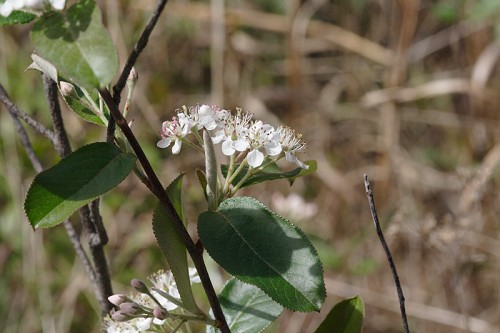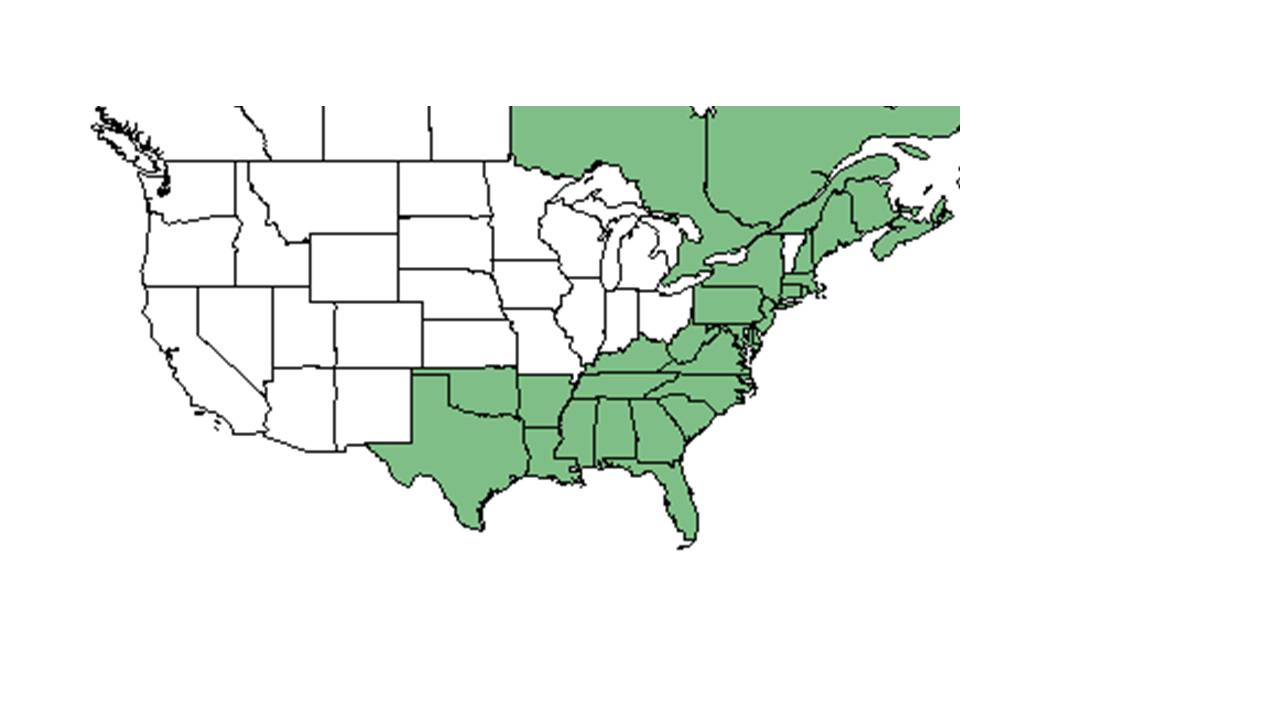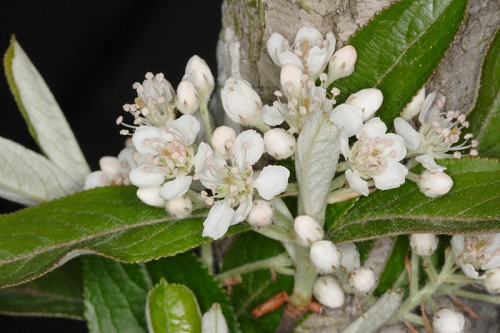Aronia arbutifolia
Common name: Red chokeberry
| Aronia arbutifolia | |
|---|---|

| |
| Photinia pyrifolia shown is a synonym of Aronia arbutifolia Photo by John R. Gwaltney, Southeastern Flora.com | |
| Scientific classification | |
| Kingdom: | Plantae |
| Division: | Magnoliophyta - Flowering plants |
| Class: | Magnoliopsida – Dicotyledons |
| Order: | Rosales |
| Family: | Rosaceae |
| Genus: | Aronia |
| Species: | A. arbutifolia |
| Binomial name | |
| Aronia arbutifolia (L.) Pers. | |

| |
| Natural range of Aronia arbutifolia from USDA NRCS Plants Database. | |
Contents
[hide]Taxonomic notes
Synonyms: Pyrus arbutifolia (Linnaeus) Linnaeus f.; Photinia pyrifolia (Lamarck) K. Robertson & J.B. Phipps; Sorbus arbutifolia (Linnaeus) Heynhold var. arbutifolia
Varieties: none
Description
Distribution
It is native to the southeast United States and up the east coast, ranging from Texas and Oklahoma to Maine. It is also native to the eastern portion of Canada.[1]
Ecology
Habitat
Habitats of A. arbutifolia include boggy pine flatwoods, titi bogs, shrub bog, bays, margins of bays, cypress swamp pond, swampy woodlands, borders of titi swamp, wet prairie, low palmetto flatwoods, cabbage palm hammock, dry sandy soil of high pineland, mixed hardwoods, longleaf pine rolling terrain, swampy areas along rivers and creeks,[2] and seepage slopes.[3]
Areas have been observed as wet and boggy with loamy sand, wet soil and dry sandy soil.[2]
Associated species include wiregrass, pines, saw palmetto, Ilex myrtifolia, Ilex coriacea, Cliftonia monophylla, Cyrilla racemiflora, Persea palustris, Myrica cerifera, Lyonia lucida, Smilax laurifolia, Aster spinulosus, Cuphea aspera, Sabal palmetto, Quercus virginiana, Magnolia virginiana, Solidago fistulosa, Pinus palustris, Aronia arbutifolia, Aster spinulosus, and Thelypteris palustris.[2]
Phenology
Observed blooming period February through April and fruiting March through December.[2]
Fire ecology
A. arbutifolia has been documented in wet pinewoods of a one year unburned old growth longleaf pine stand.[2]
Conservation and management
Cultivation and restoration
Photo Gallery
Flowers of Photinia pyrifolia shown, a synonym of Aronia arbutifolia Photo by John R. Gwaltney, Southeastern Flora.com
References and notes
- Jump up ↑ USDA, NRCS. (2016). The PLANTS Database (http://plants.usda.gov, 20 March 2019). National Plant Data Team, Greensboro, NC 27401-4901 USA.
- ↑ Jump up to: 2.0 2.1 2.2 2.3 2.4 Florida State University Robert K. Godfrey Herbarium database. URL: http://herbarium.bio.fsu.edu. Last accessed: July 2015. Collectors: Loran C. Anderson, Robert K. Godfrey, Robert Kral, S.W. Leonard, A. G. Shuey, Bruce Hansen, JoAnn Hansen, John B. Nelson, Gary R. Knight, Mark A Garland, Elmer C. Prichard, George R. Cooley, Joseph Monachino, R. Komarek, R.A. Norris, Rodie White, H.L. Stoddard, Roomie Wilson. States and Counties: Florida: Columbia, Dixie, Franklin, Gadsden, Gulf, Hamilton, Holmes, Jackson, Jefferson, Lafayette, Lake, Leon, Liberty, Madison, Marion, Okaloosa, Pasco, Santa Rosa, Taylor, Walton, Wakulla, Volusia. Georgia: Grady, Thomas. Compiled by Tall Timbers Research Station and Land Conservancy.
- Jump up ↑ Observation by Jake Heaton in Avon Park Air Force Range, southern Polk County, FL, April 17, 2016, posted to Florida Flora and Ecosystematics Facebook Group April 22, 2016.
